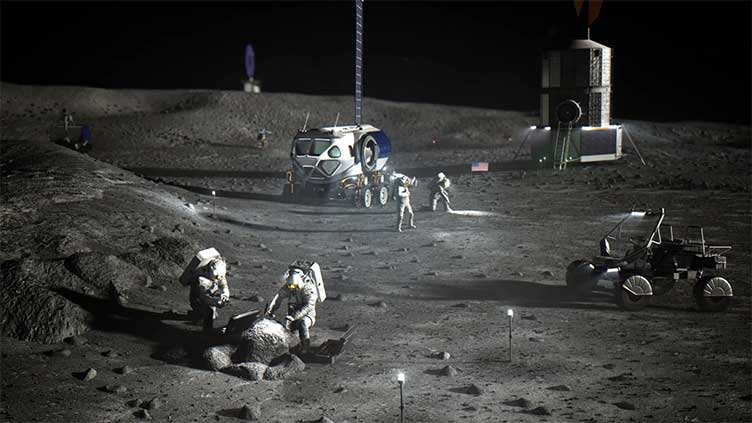Talking on the Moon: The quest to establish lunar wi-fi

Technology
Nasa's Artemis programme intends to put astronauts in lunar orbit in 2025
(Web Desk) - The Apollo astronauts' links to Earth were primitive compared to those we enjoy today.
The next generation of moonwalkers may have a far more high-resolution way of keeping in touch – both with each other, and with us back on Earth.
On 20 July 1969 an estimated 600 million people watched a live broadcast that was both out of focus and of extremely poor quality.
The historic nature of the first human walking on the Moon – part of Nasa’s Apollo 11 mission – naturally overshadowed the technicalities.
Nasa's Artemis programme intends to put astronauts in lunar orbit in 2025, with a crewed landing a year later. The South Pole is favoured due to both sustained sunlit areas and frozen water ice in permanently shadowed areas of deep craters – a potential source for water and fuel.
But this varied terrain also has drawbacks. One potential landing site, known as Shackleton Crater, is two miles deep and 12 miles wide.
Once 4G and 5G are available on the Moon, any astronaut on the surface can communicate reliably with their rovers, instruments and crew members. Any data coming back to Earth can then be sent over one link – an efficient way to communicate when large ground stations are often in high demand.
On the far side of the Moon, there is also the problem of maintaining communications with the Earth when it is no longer within line of sight. The only way to achieve this is via a relay satellite.
But today's global audiences take high-definition live streaming for granted and, for the next generation of lunar astronauts, expectations will be much higher.
"No one is going to accept the Apollo video quality," says Matt Cosby, chief technology officer at the UK’s Goonhilly Earth Station, which communicates with satellites and spacecraft.
Goonhilly broadcast the Moon landing's television signal around the world and recently received the first signal from Intuitive Machines' Odysseus craft, confirming the US's first soft-landing on lunar soil in more than 50 years.
"We will expect 4K resolution from the Moon almost in real time coming from the landing. It's going to be up to 500 megabits of data coming back so the images are going to be 10 times better," says Cosby.
"In this day and age, and with social media, grainy black and white photos and videos from the Moon's surface will be unacceptable and we need to get the higher frequencies to be able to do that. It's not a huge leap but it needs to be made. It's all about investment."
That investment is underway globally. Between 2021-23 Nasa's LunarLites project, at its Glenn Research Centre in Ohio, evaluated how Earth's 4G and 5G technologies could translate to the lunar environment and now has two new ongoing projects.
The Lunar Surface Propagation (LSP) project is studying how wireless communications systems will perform in the lunar surface environment.
"The Apollo missions all landed near the Moon’s mid-latitudes and mostly around the flat lava plains," say Michael Zemba, Nasa’s LSP principal investigator. "For the Artemis campaign, however, our interest lies in exploring the poles of the Moon."



